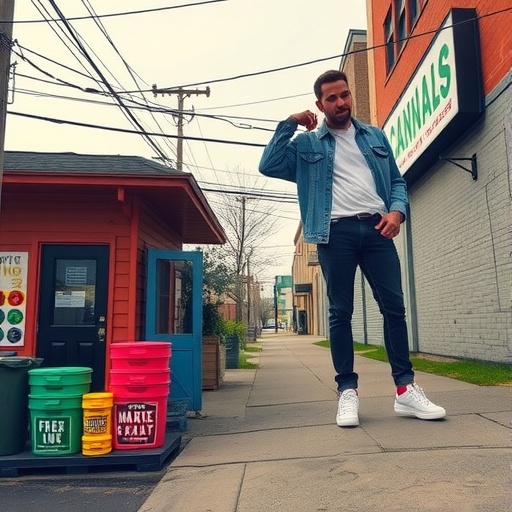Ann Arbor, June 2, 2025 — A groundbreaking new study published in the prestigious American Journal of Preventive Medicine exposes a stark reality in the evolving landscape of recreational cannabis retailing across the United States. Conducted by researchers from the Harvard T.H. Chan School of Public Health, this extensive analysis reveals that cannabis retailers are disproportionately concentrated in socioeconomically disadvantaged neighborhoods and areas with higher populations of racial minorities. These findings carry profound implications for public health policy, equity, and urban planning initiatives in the era of legal cannabis markets.
The investigators harnessed 2023 data from state regulatory agencies spanning 18 states that have legalized adult-use recreational cannabis sales between 2012 and 2022. These states encompass a diverse range of geographical regions, including Alaska, California, Colorado, Illinois, and Washington, among others. The researchers methodically geocoded the addresses of 5,586 licensed cannabis retailers and employed rigorous statistical modeling—specifically multilevel logistic and negative binomial Poisson regression techniques—to explore associations between neighborhood socioeconomic deprivation indices and the spatial distribution of cannabis retail availability.
Lead author Lindsay L. Kephart, PhD, MPH, pointed out that cannabis retailers are present in only about 10 percent of all census tracts within legalized states but tend to cluster prominently in the most socioeconomically vulnerable communities. “Our data demonstrate that neighborhoods characterized by high concentrations of low-income Black residents possessed 2.53 times more cannabis retailers compared to affluent, predominantly White neighborhoods,” explained Dr. Kephart. Similarly, tracts with substantial populations of low-income Hispanic residents had 2.67 times the retailer presence, vividly illustrating entrenched disparities in access and exposure.
The study situates the new data within a well-established body of literature documenting the legacy of inequitable retail environments for substances like tobacco and alcohol. Historically, tobacco and alcohol outlets have been disproportionately numerous in lower-income and minority neighborhoods, perpetuating cycles of health inequity. The emergence of legal recreational cannabis retail has, in effect, replicated and potentially amplified these patterns, raising concerns about the cumulative public health burden on communities already facing systemic disadvantages.
Delving deeper into causal pathways, Dr. Kephart highlighted the role of structural mechanisms such as historical zoning policies and Not-In-My-Backyard (NIMBY) attitudes that spatially segregate certain types of commercial activity. She elaborated, “While often not an explicit intention, such patterns funnel cannabis retailers toward marginalized neighborhoods, reinforcing existing inequities in substance exposure and economic opportunity.” This spatial patterning is a legacy of policy frameworks that disadvantage low-income and minority communities by relegating potentially ‘undesirable’ businesses to their vicinity.
Intriguingly, the study’s sensitivity analyses distinguished the effects of race and socioeconomic status. While racial disadvantage alone did not significantly predict cannabis outlet availability, the interplay of race with low-income status appeared pivotal. Neighborhoods where racial minorities and low-income residents overlap are most vulnerable to concentrated cannabis retail presence. This nuanced finding underscores the multifactorial nature of social determinants influencing retail landscapes and suggests that purely race-based interventions might miss crucial economic dimensions.
Cannabis use itself remains pervasive, with nearly 19% of Americans aged 12 or older reporting consumption in the past year. As of late 2024, 24 states have legalized recreational cannabis, pointing to a




